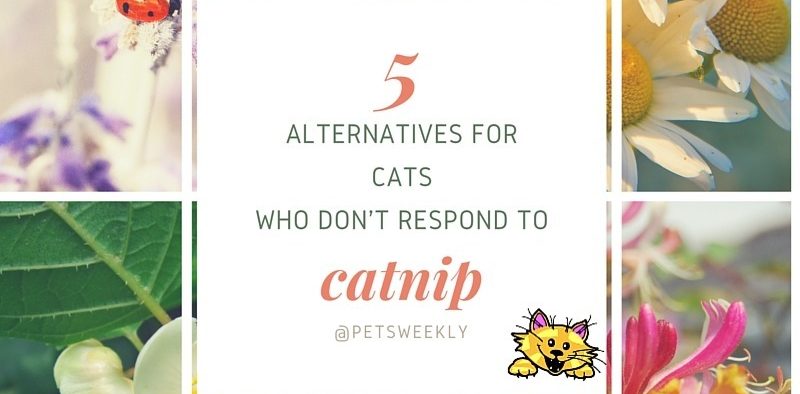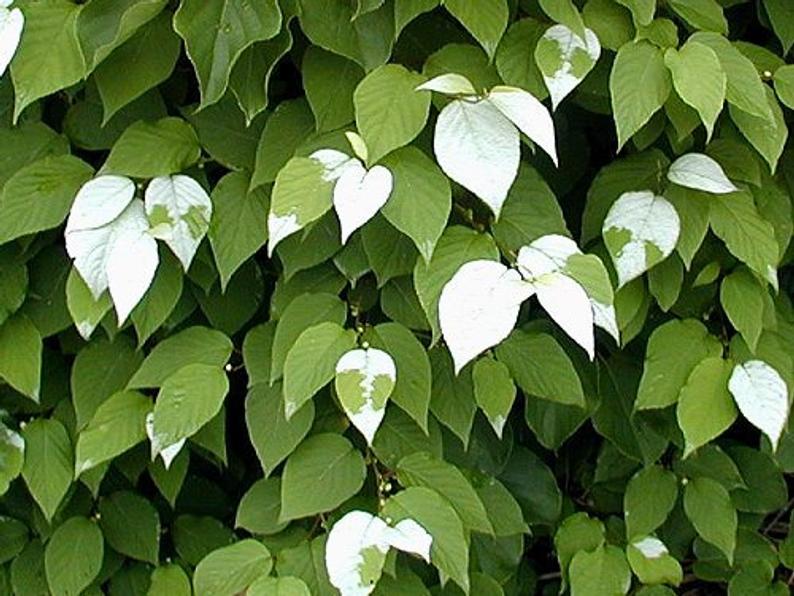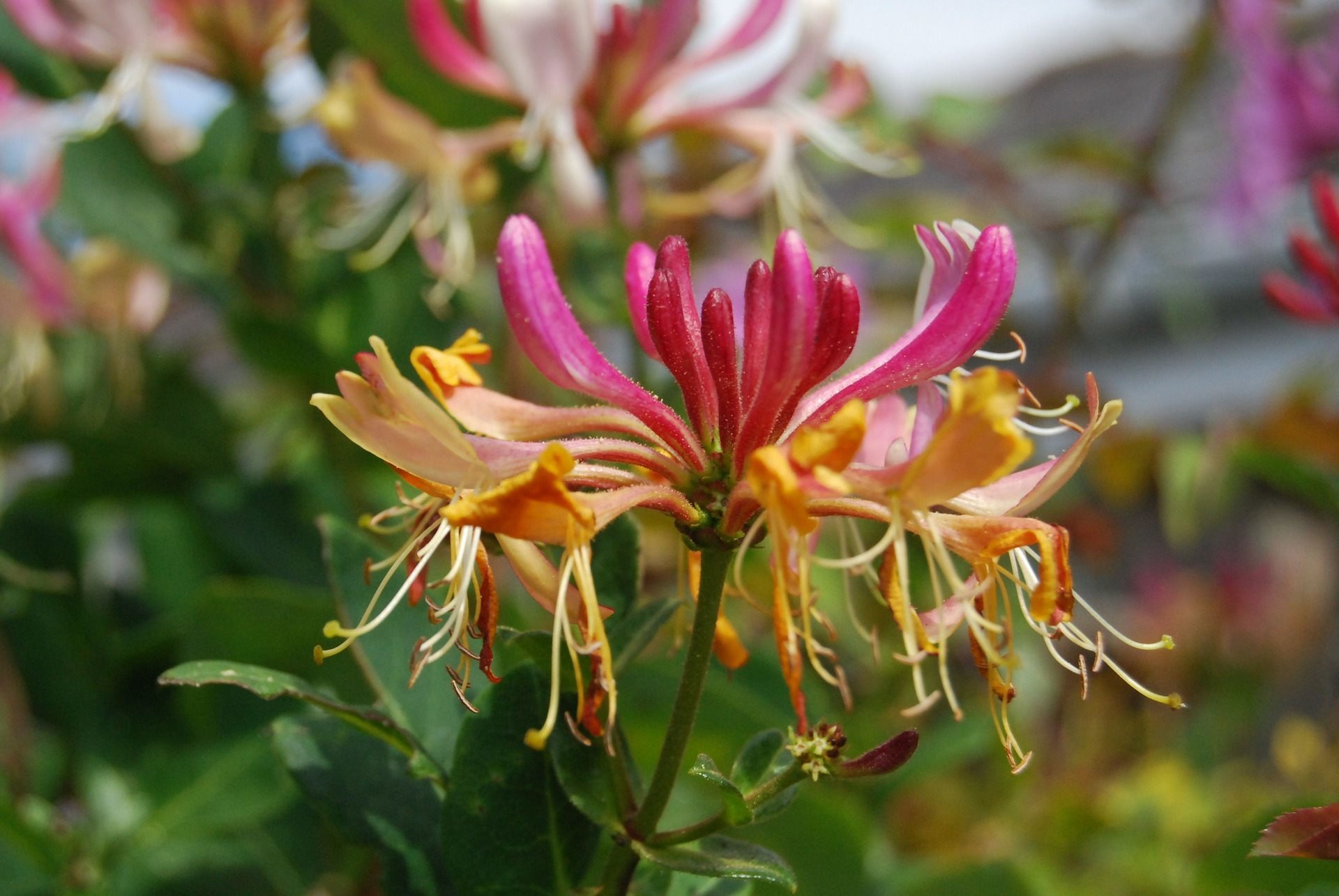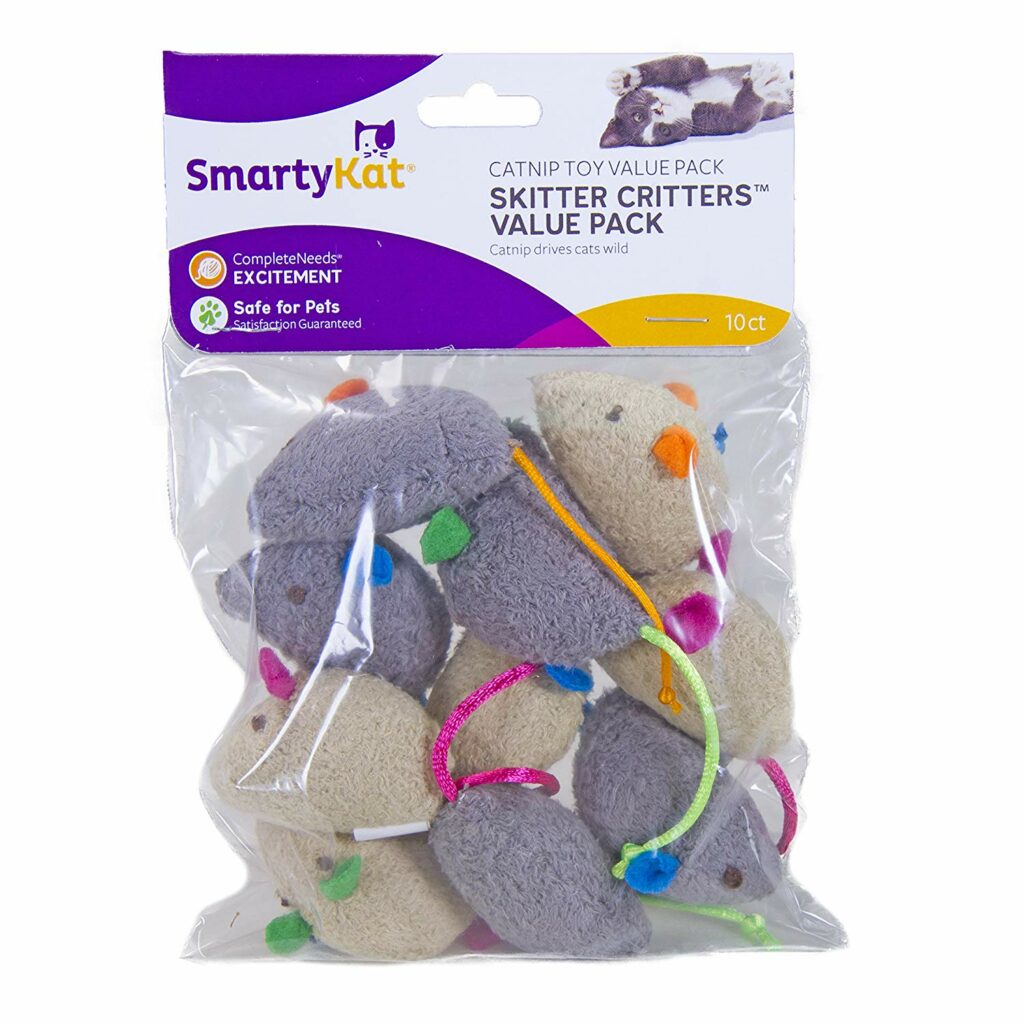Top 5 Alternatives to Catnip
Share

Catnip (Nepeta cataria) is an amazing plant for both cats and humans, but not all cats will respond to this herb. For those who don’t, we have five alternatives to catnip that your cat will enjoy.
Catnip is related to the Mint family, and has been grown for centuries – not only because cats love it, but also because it offers a range of remedies for humans.
It can have a sedative effect on humans (acting much like the herb, chamomile). Best of all, the concentration of its active chemical nepetalactone is reported to be 10 times more powerful than DEET when used as a mosquito repellent, according to new findings by the American Chemical Society.
Not All Cats Respond to Catnip
Only about 50 – 75% of cats will have a reaction to catnip. If your cat is under three months old, they will have no reaction at all. Their reaction will come down to their vomeronasal organ, which is located above the palate.
This isn’t developed until they are older (between 6-8 weeks and in some cases, over three months of age). In some cats, it won’t develop at all.
In addition, the reaction to catnip is an inherited trait and if your cat doesn’t have the gene, they just won’t respond to the plant.
But not all is lost. If you have a cat that doesn’t respond to the favored nip, you simply need to find an alternative that does work. Here is a roundup of our top five favorite alternatives to catnip:
This is not intended to replace veterinary advice. We are not veterinarians. Always speak to your veterinarian before trying natural remedies. If the symptoms worsen or persist longer than one week, make an appointment with your veterinarian. Pets are family and deserve medical care that is reflective of their significance in our lives.
1. Valerian Root
Valerian root is not only popular as a tea for humans, but also as a stimulant for cats. Over 120 chemical components are found in valerian but while it’s a very complex herb, it has not been found to have any negative side effects when used moderately.
The attractant chemical in valerian is known as actinidine. Some holistic veterinarians believe that valerian mimics the natural pheromones of cats.
There are also many medical benefits to valerian. Not only does it help with reducing stress, it can help improve activity levels of cats. Some veterinarians have used it to reduce hyperesthesia (sometimes referred to as “Rippling skin” or “twitchy cat”).
Valerian root is one of the more odorous of herbs for humans. For some, it resembles the scent of old shoes and well-used gym lockers. If you’re planning to transport it, make sure you seal it in a bag. This will also help keep it fresher for your cat.
If you want to give valerian root a try, choose an organic source so your cat is not inadvertently exposed to chemicals or pesticides. We love the Valerian Root used by From the Field and what is used in Bavarian Cat Toys.
2. Silvervine
Silvervine grows in many gardens around the world these days, but it’s traditionally found in Japanese gardens. In Japan, Silvervine is known as Matatabi.
This plant is so potent that it contains not just one, but two cat attractant compounds. The first is Actinidin (which is also found in Valerian). The second is dihydroactinidiolide, which is a terpene with a sweet tea-like fragrance.
Silvervine is such a well-known attractant that there is an old Japanese saying:
ねこ に またたび%2C じょろ に こばん
“neko ni matatabi, joro ni koban”
(translated as: “Silvervine to a cat, a coin to a prostitute”). Basically it means, “To put someone in a good mood, give them their heart’s desire.”
When purchasing Silver Vine products, stay with vendors you know. There can be a lot of adulteration in natural products, so we recommend staying with organic sources. Our favorite packages of Silver Vine come from From the Field.
There is also a new product called CatTwig that we haven’t personally had an opportunity to review, but it may be worth checking out.

3. Lavender
Lavender is one of our favorite essential oils to diffuse in our home. It’s safe for cats and dogs and humans, offers all of us a calming effect, and helps keep the peace among a variety of species.
These days, you can find lavender-scented everything (from cat litter to cleaning solution). So, why is lavender such a big hit?
Because it’s a natural calmant for nearly every species (including humans), it’s a natural pest repellent, it’s a beautiful herb, and it smells great!
In 2009, The International Journal of Phytotherapy and Phytopharmacology published a report in which a double-blind study was performed to investigate lavender as an alternative to benzodiazepine (valium). The six-week study, compared lorazepam (valium, which is a common medication prescribed for depression) to silexan (a lavender oil capsule). Results were compared using the Hamilton Anxiety Rating Scale (which is the industry standard for measuring anxiety). It showed that those taking the lavender capsule showed as much improvement as those taking the lorazepam.
The active ingredients in lavender are linalool, linalyl acetate, terpinen-4-ol, and camphor. Linalool is a terpene that is responsible for the strong floral scent of lavender.
How to Use Lavender
There are many ways you can explore the benefits of lavender, but one of our favorites is diffusing a high-quality lavender essential oil into the air.
When diffusing any type of oils around cats, be sure you take precautions. While lavender is one of the safest oils there is, diffusion of oils into the air should only be done in areas where animals have a clear way to leave the room if it becomes too much for them.
Remember, less is more when it comes to essential oils. Many essential oils are toxic to cats and should never be given to cats orally or applied topically, unless you’re under the care of a holistic veterinarian. (Learn more about 10 Possible Reasons Your Cat Is Behaving Badly)
The best way to see how your cat reacts to lavender is to grow some it yourself. It’s considered safe for cats to eat and it also makes a great natural insect repellent!

4. Chamomile
Chamomile is a member of the Asteraceae family, but there are many different species of this flower. Two of the most popular (and safest) plants in this family are derived from Roman Chamomile (Chamaemelum nobile) or German Chamomile (Marticaria recutita).
If your cat doesn’t respond to catnip, but you still want something that will attract them to toys, Chamomile is a great alternative. Another benefit of this flower is that it will help a cat relax.
You can choose to diffuse it, buy toys with chamomile flowers inside, or use hydrosols in areas your cat enjoys. Choose an organic hydrosol so your pets aren’t exposed to chemicals.

5. Tatarian Honeysuckle (Lonicera Tatarica)
There are well over 180 species of honeysuckle plants but only one species seems to have any noticeable effect on cats and that’s the Lonicera tartarica (also known as Tartarian Honeysuckle).
Honeysuckle is one of the more unique types of plants your cat may love. If your cat doesn’t respond to catnip, he may still react to honeysuckle. In fact, it is thought that this plant can produce a greater reaction than catnip in some cats.
While there haven’t been many scientific studies done on this plant (come on, science – where are you spending your time!?), it’s been suggested that nearly 30% of cats do have a noticeable reaction.
Unlike catnip, the wood of Tartarian honeysuckle has a better effect if is wet. The active ingredient is similar in structure but not the same as the nepetalactone found in catnip. While there are many species of honeysuckle, this is the only type that cats may react to.

Be safe when selecting these toys and never give you pet the actual plant to play with. The berries from certain species of honeysuckle can be dangerous, even deadly. That’s why we recommend you only purchase honeysuckle toys from vendors you trust.
Here are a few places to order honeysuckle toys and sprays on Amazon from vendors we believe put out a good product.

SmartyKat toys offer cat-friendly herbs in many of their toys.

Use Caution
Whenever you look at natural solutions, even when it comes to toys, you should pay close attention to your cat’s reactions. Natural oils and other products can be rapidly absorbed through the digestive tract or through the skin, and then travel to the liver where they are metabolized.
Since the feline liver is deficient in many enzymes, cats may be unable to metabolize these compounds properly, which can lead to behavior problems, physical problems, and even toxicity. Most cats, however, are well aware of their deficiencies and know when they’ve had enough.










